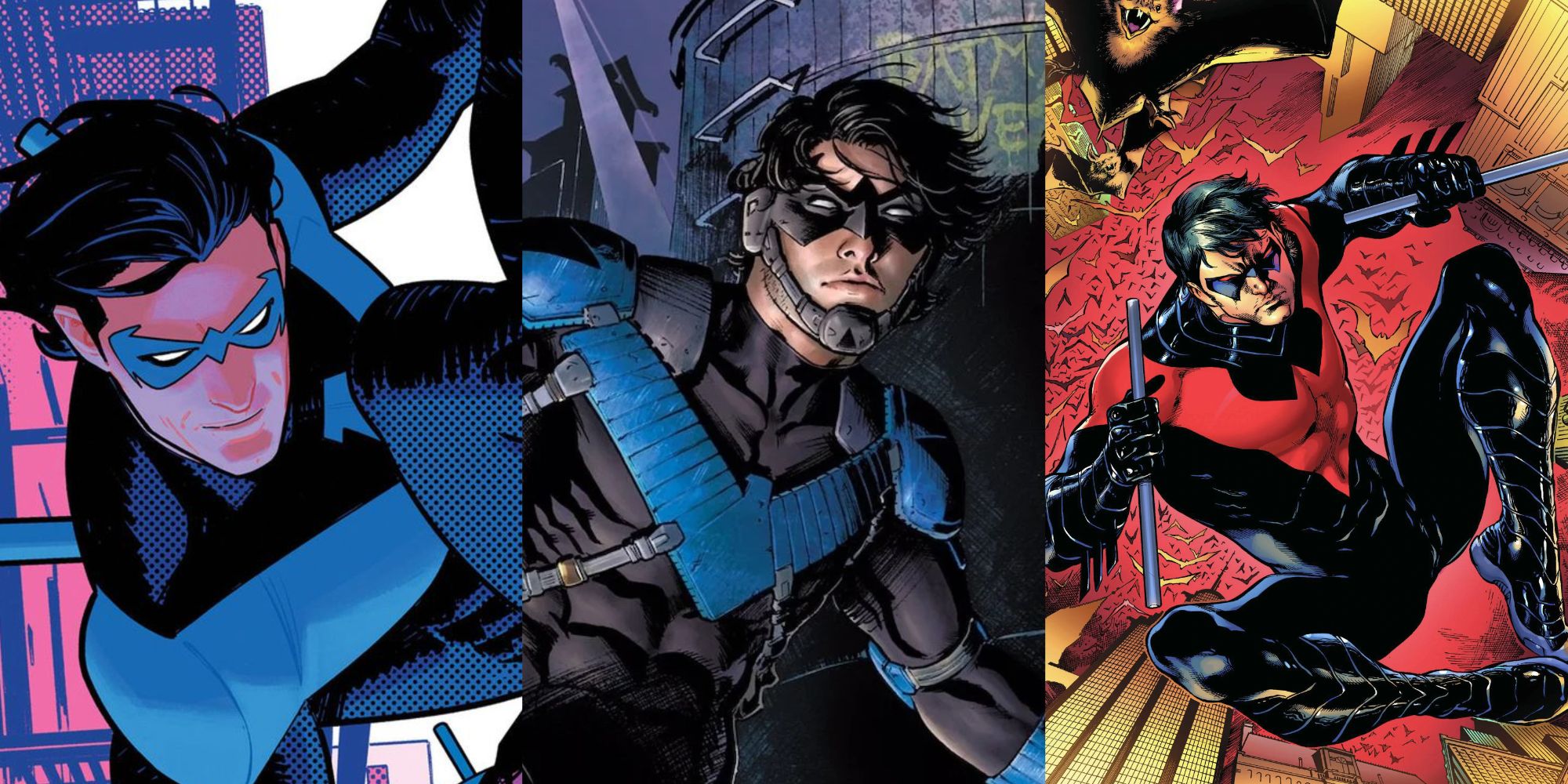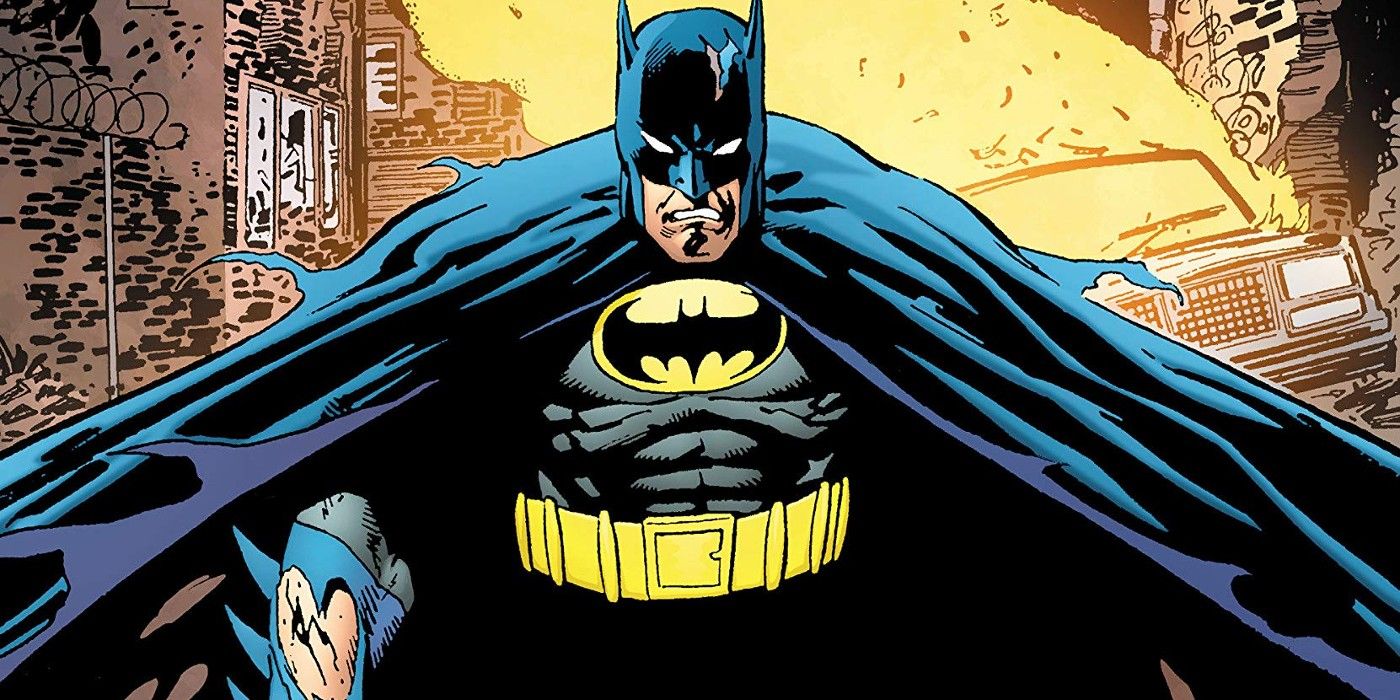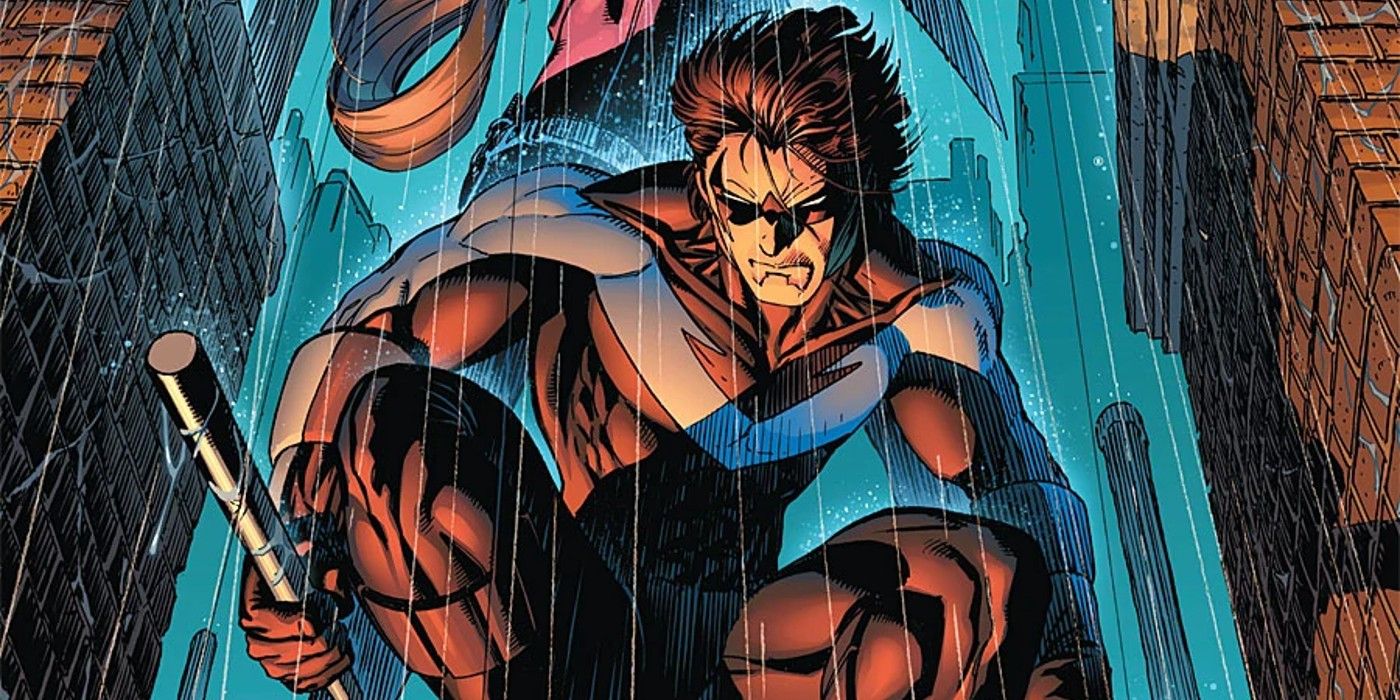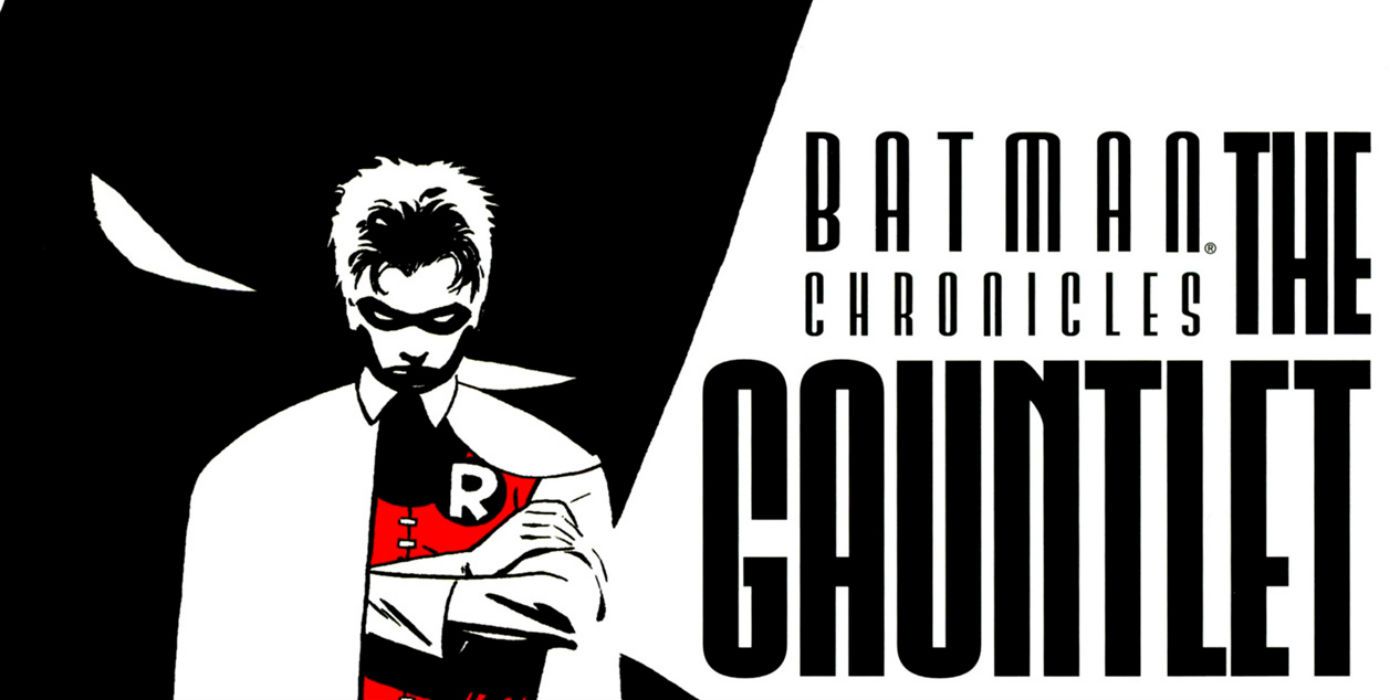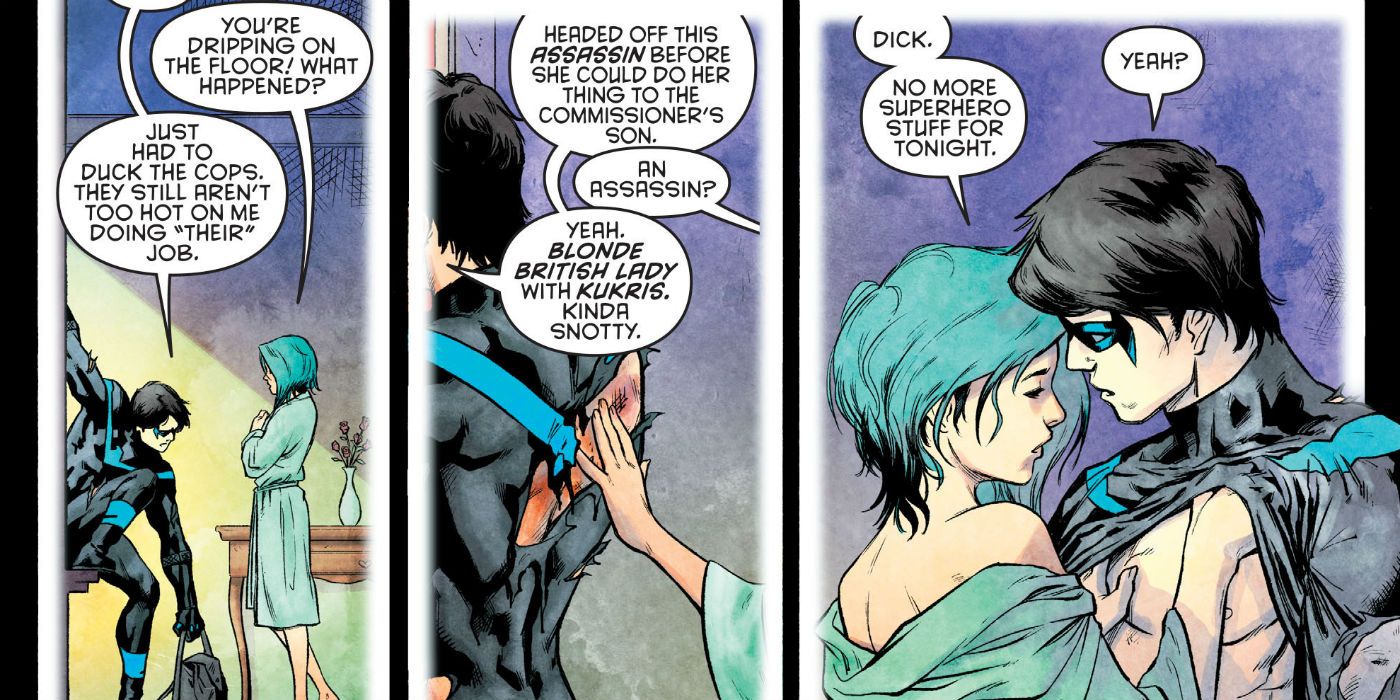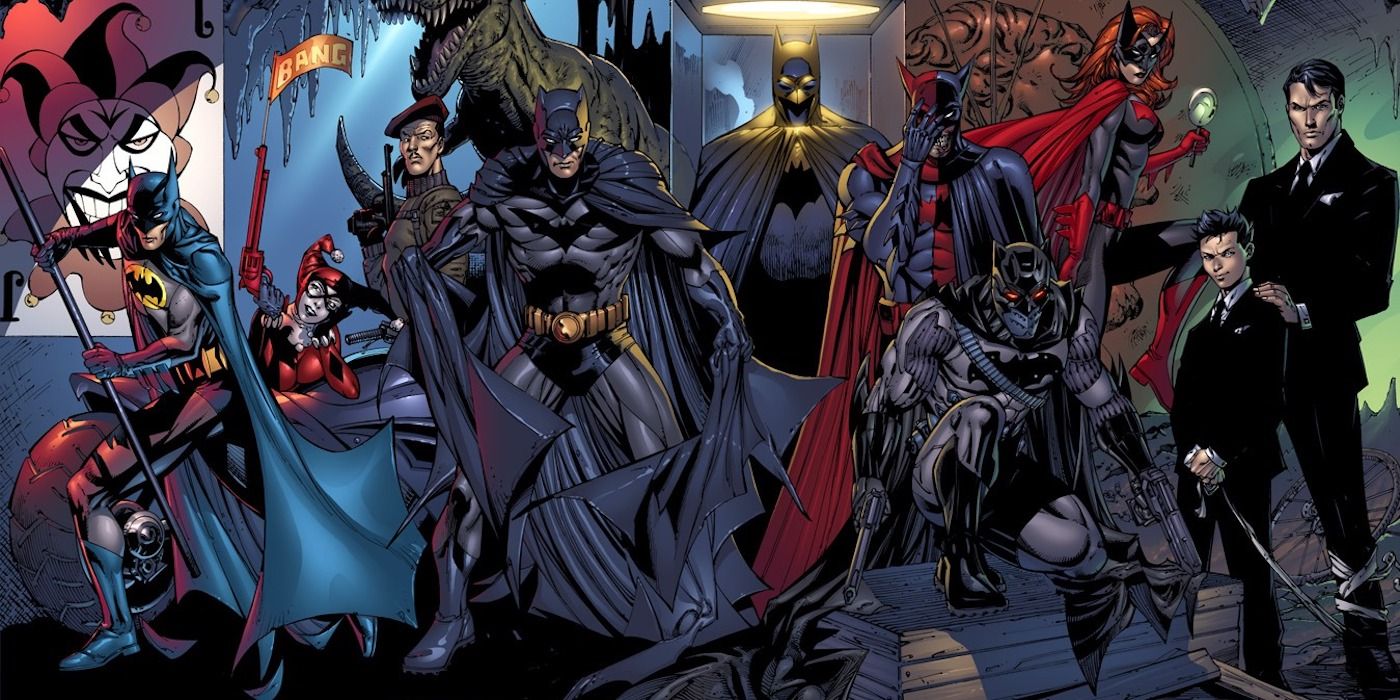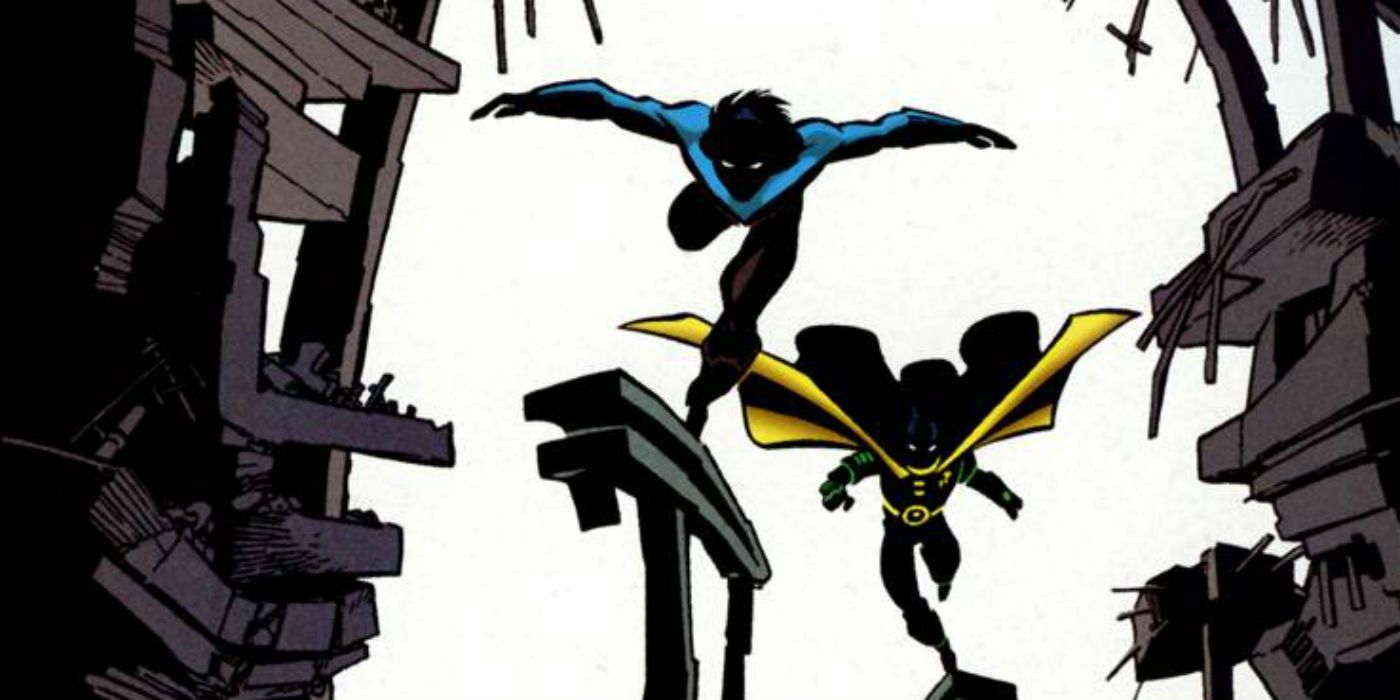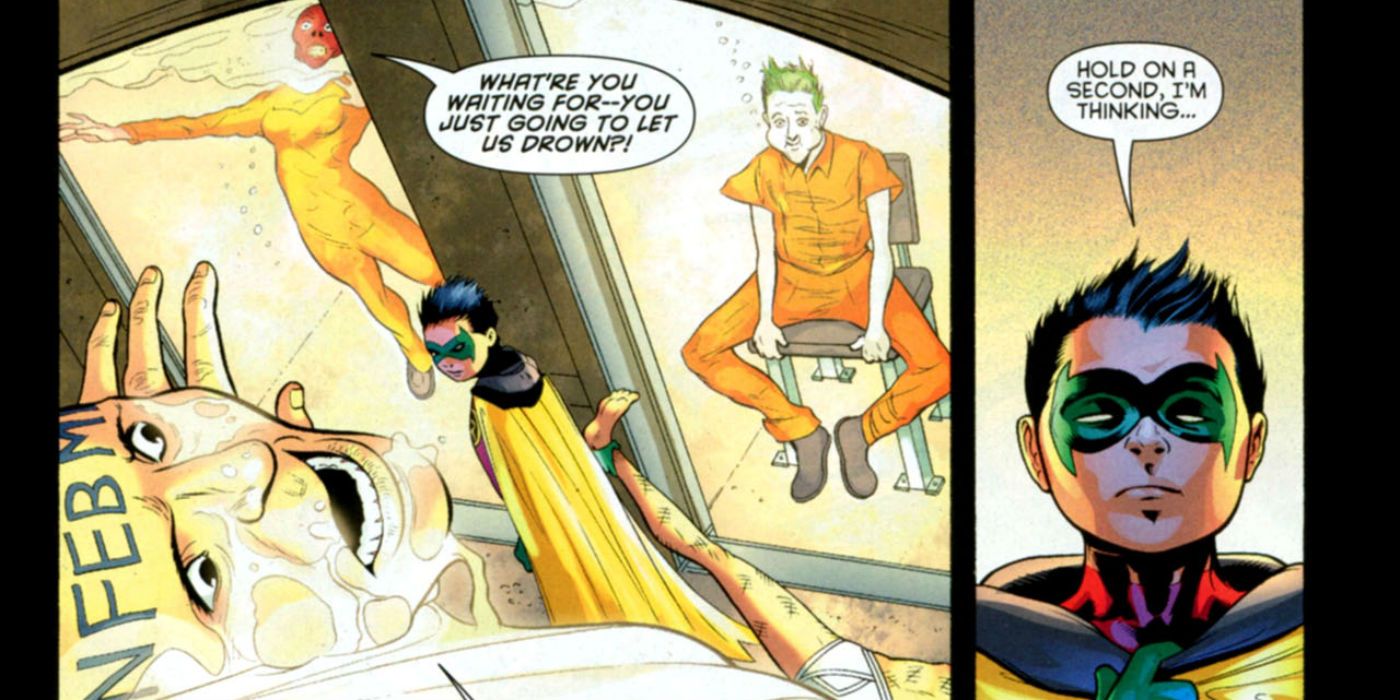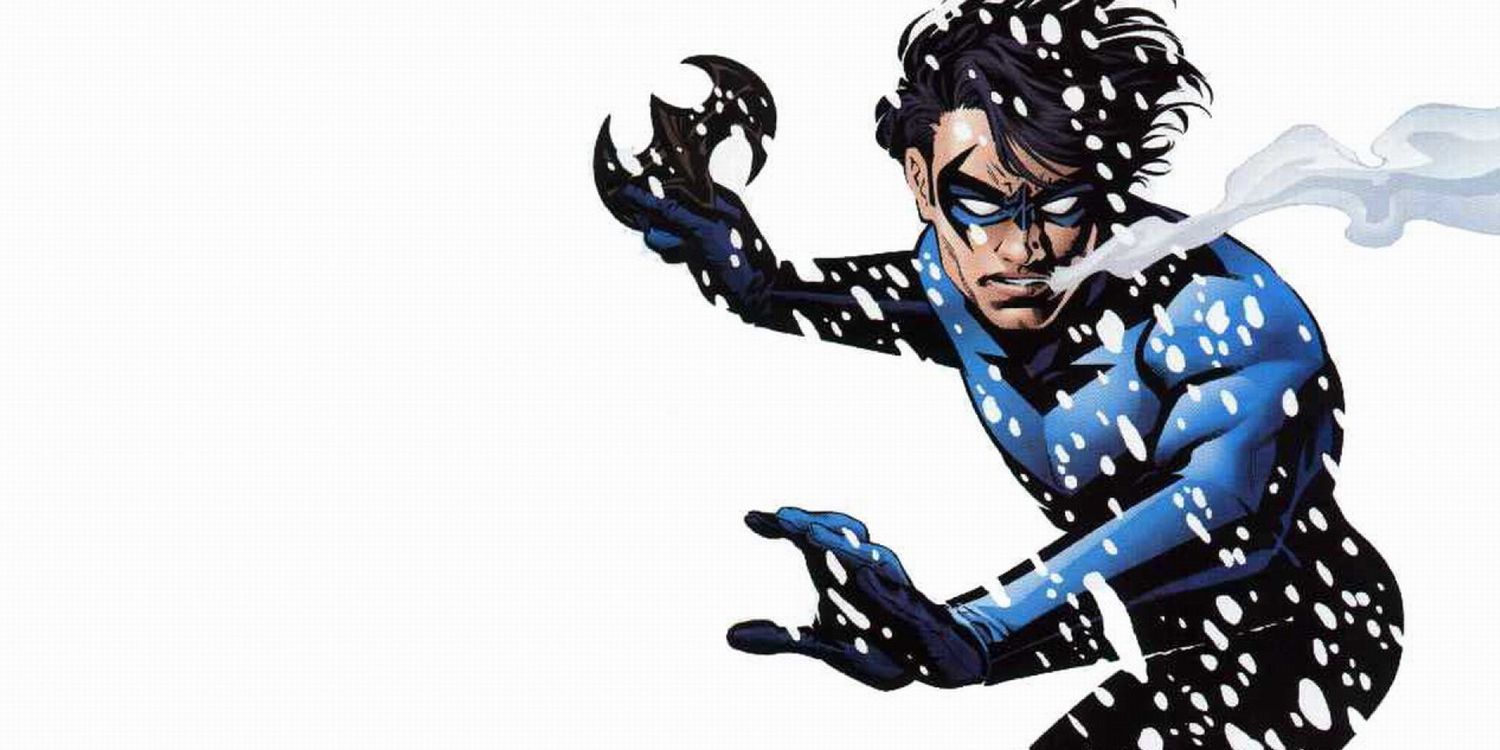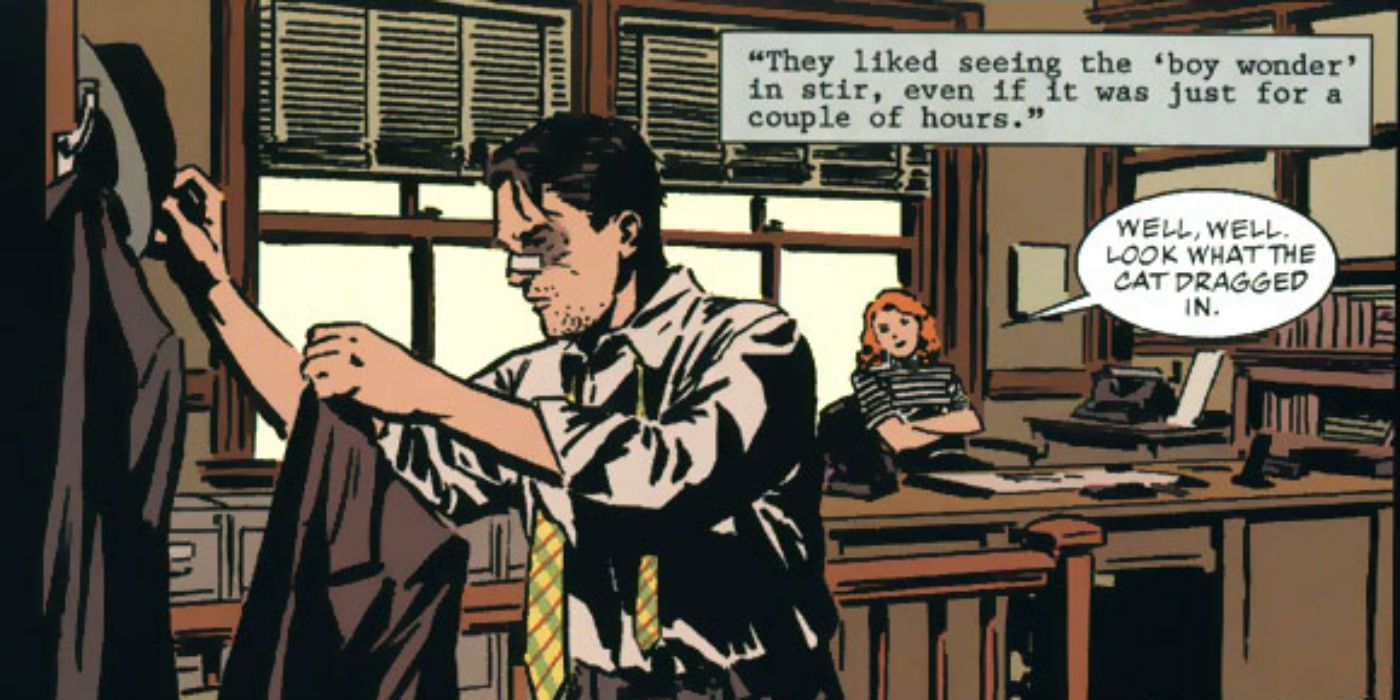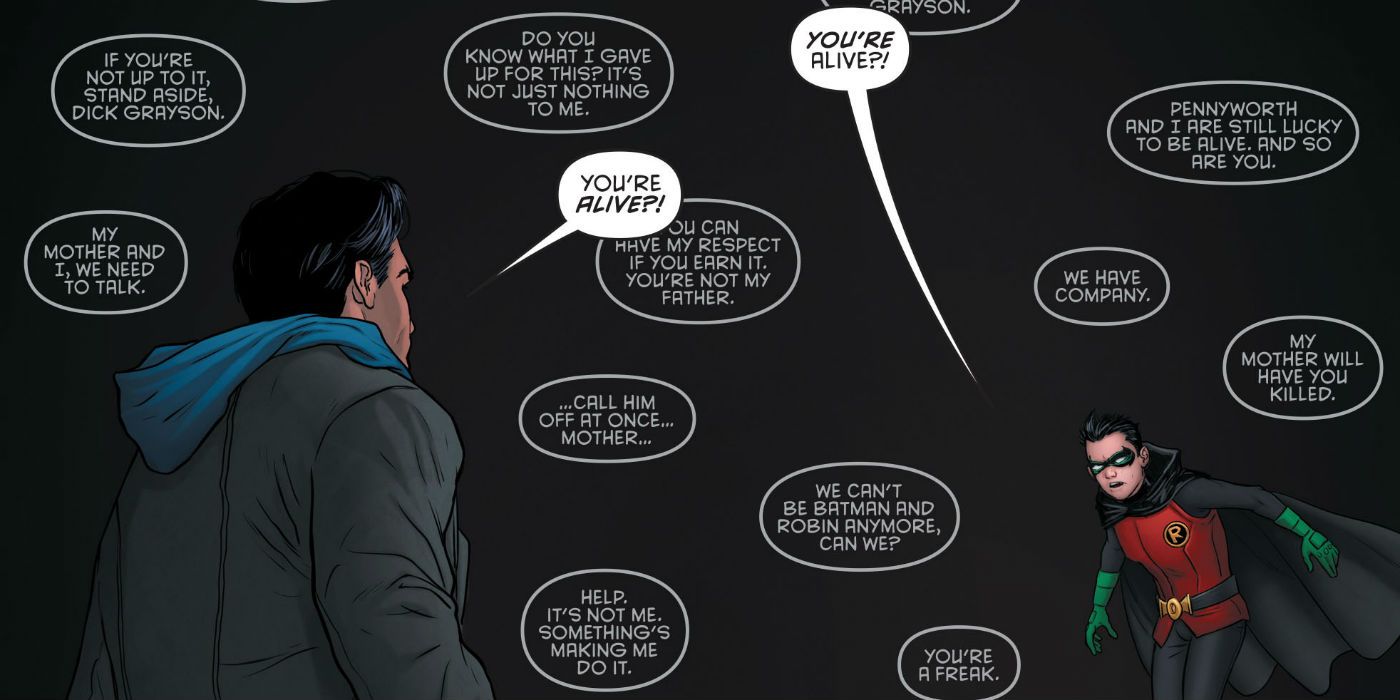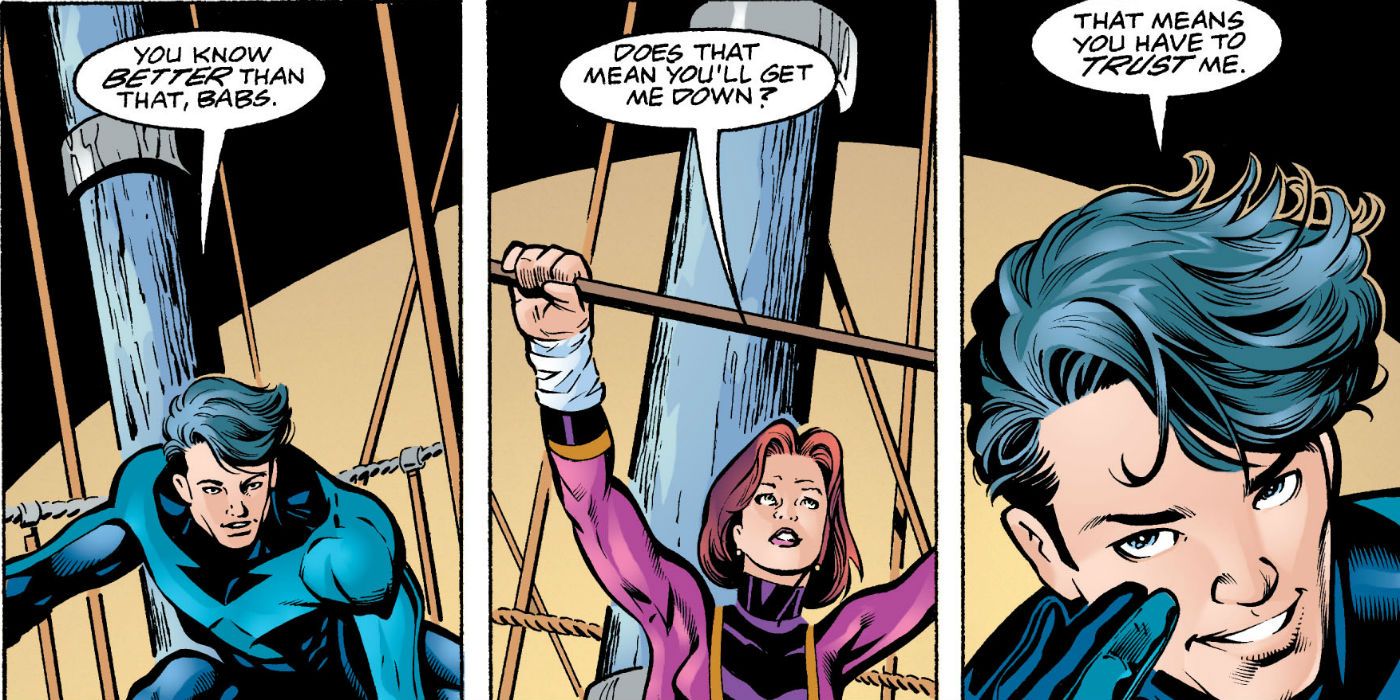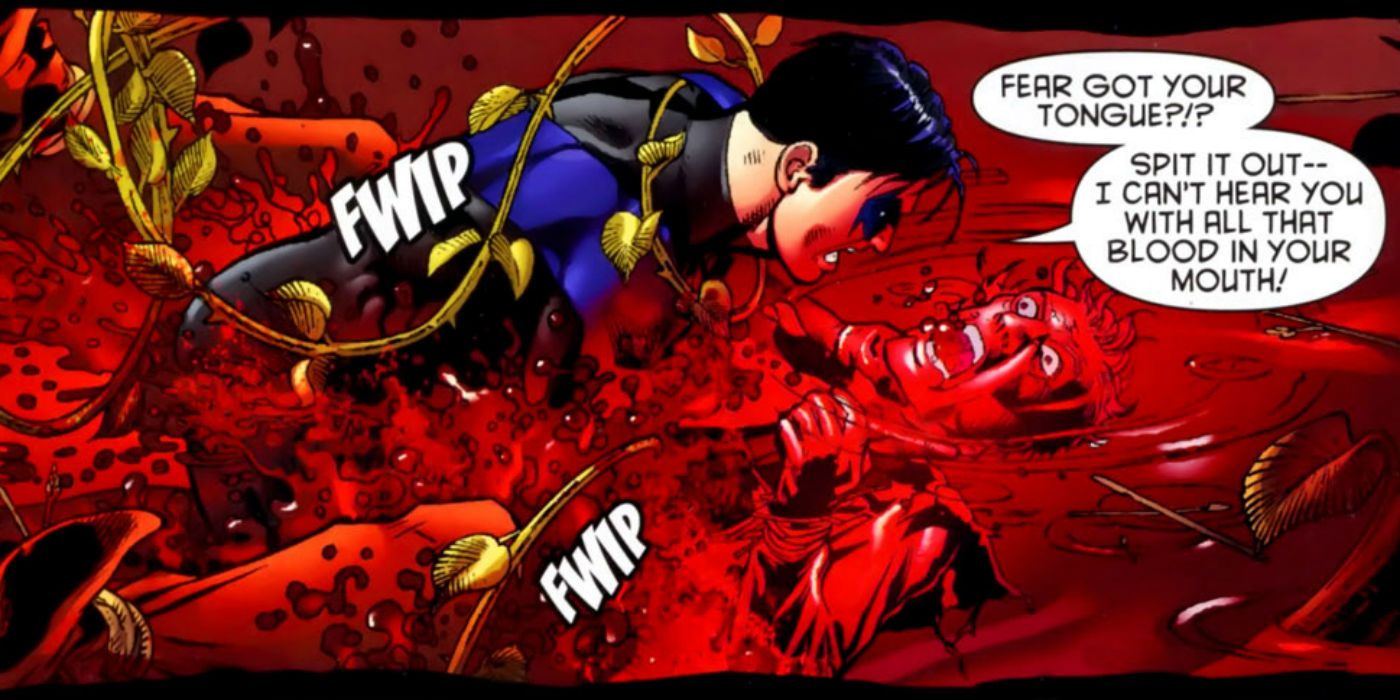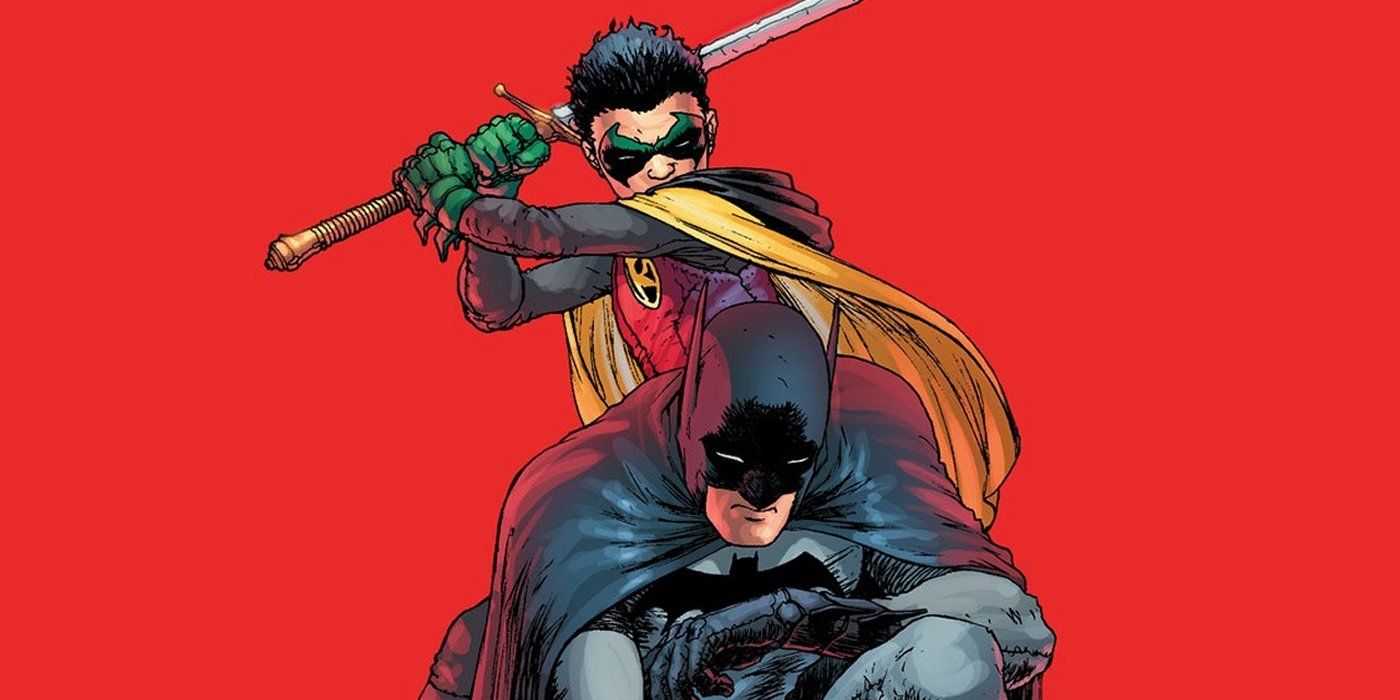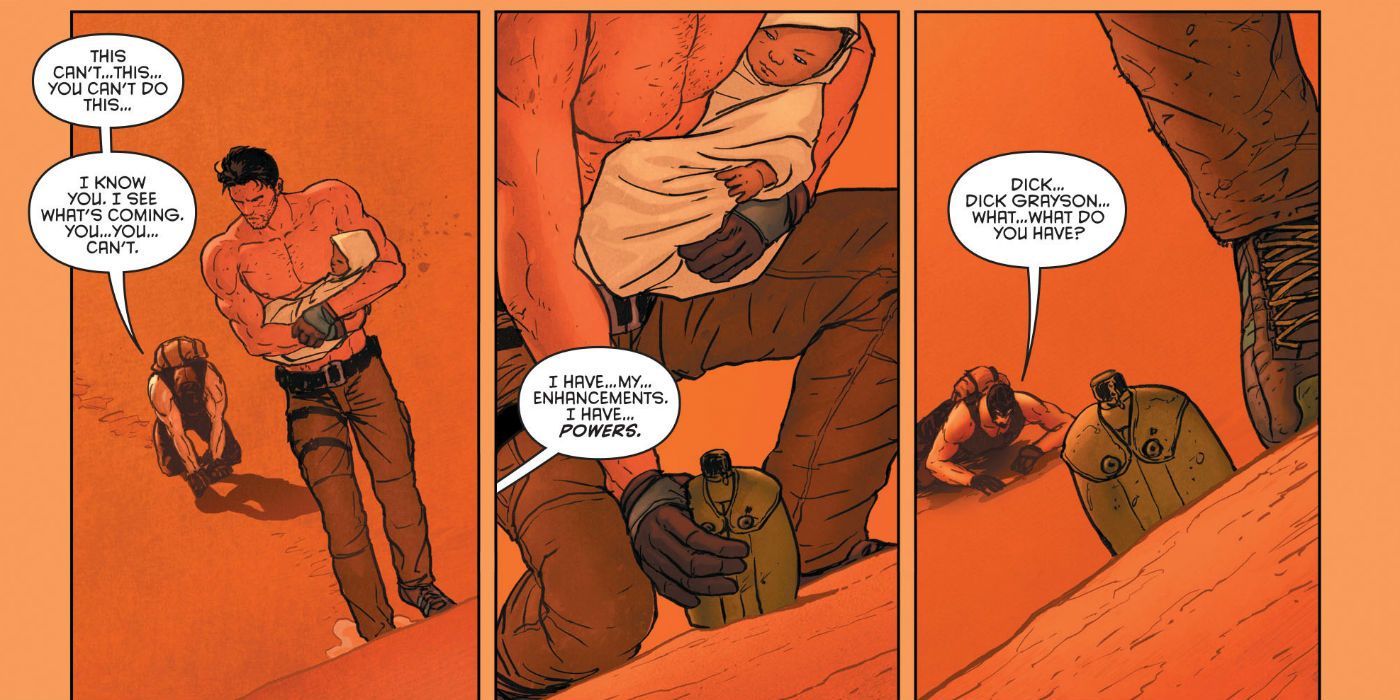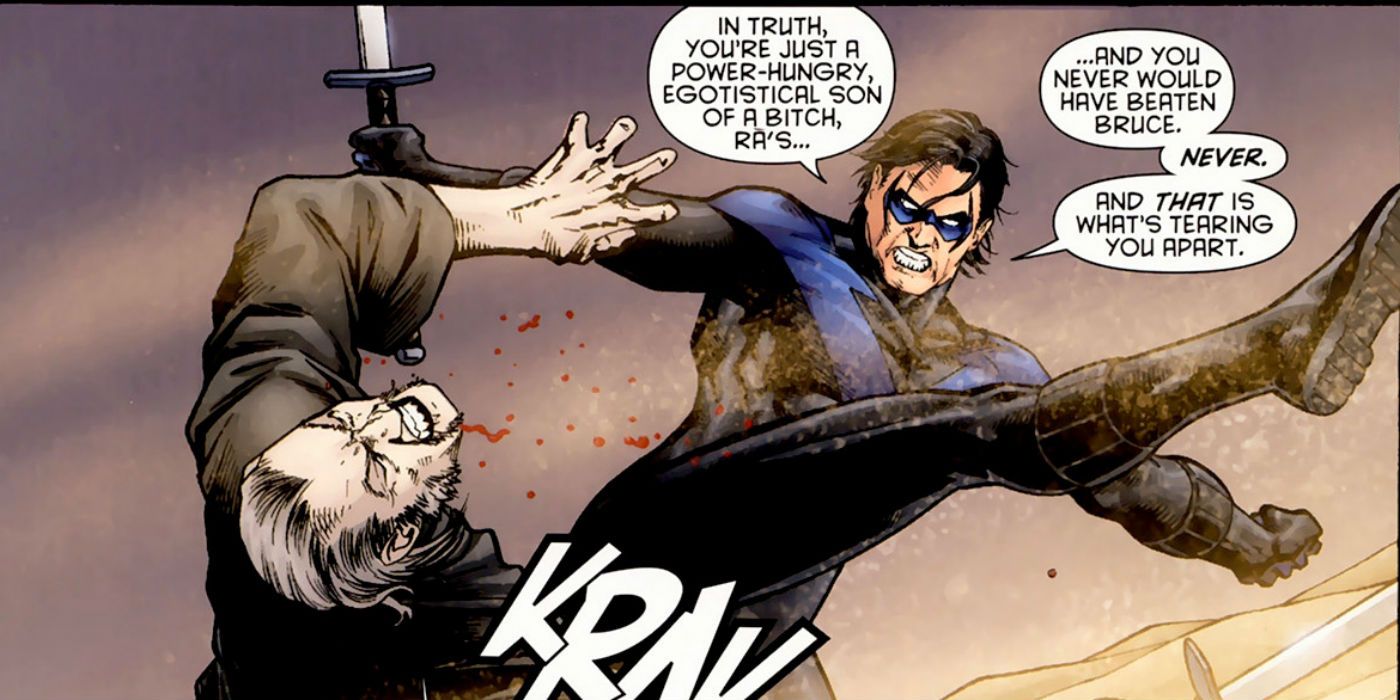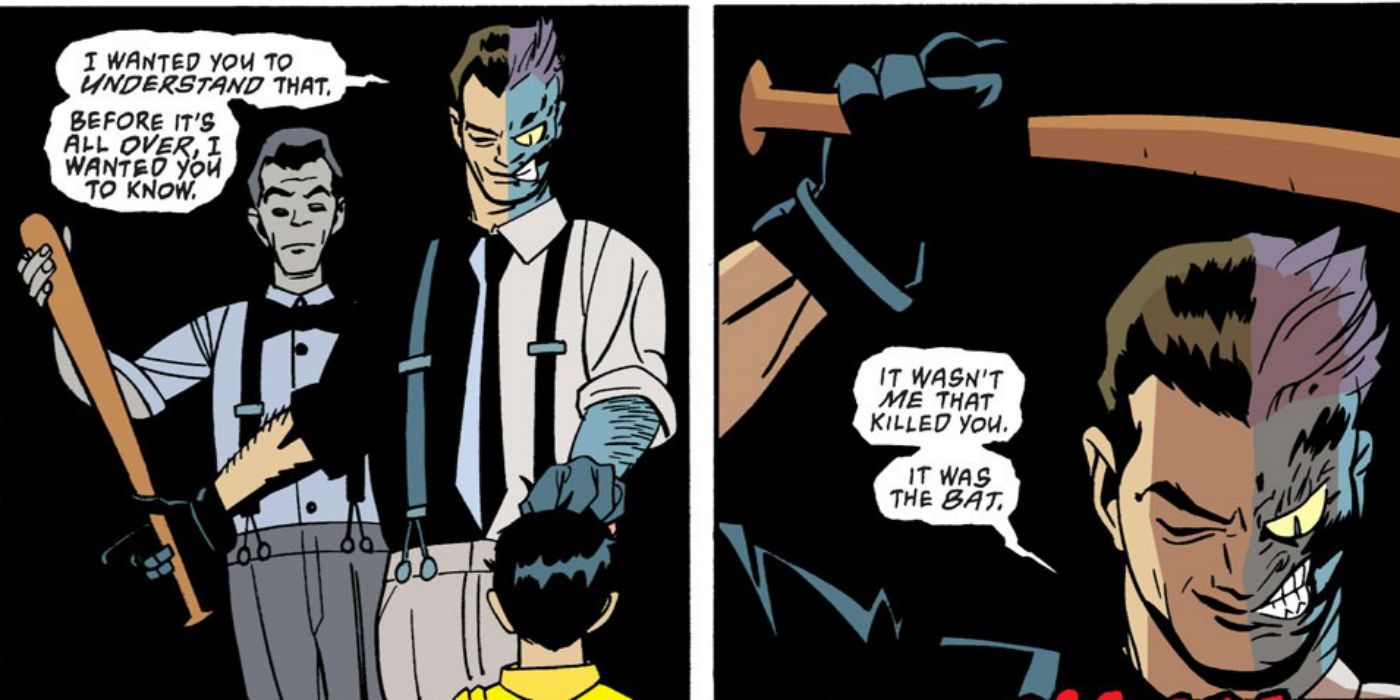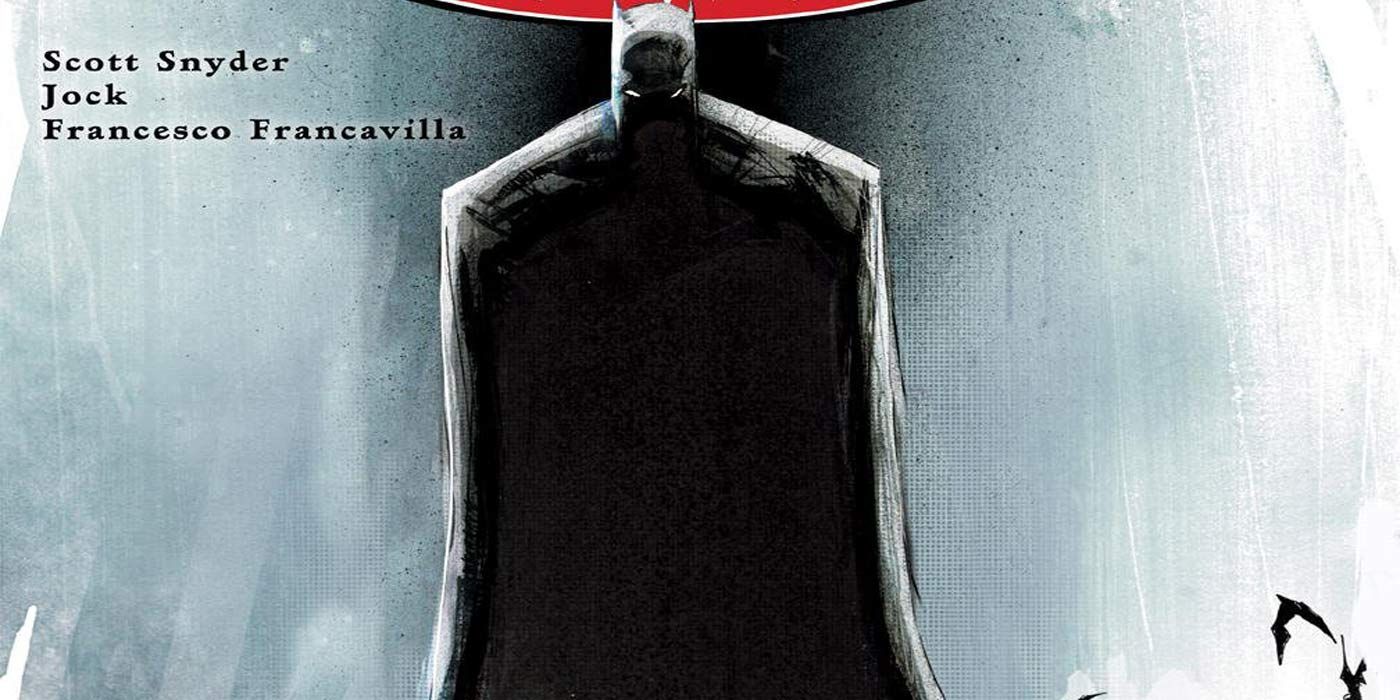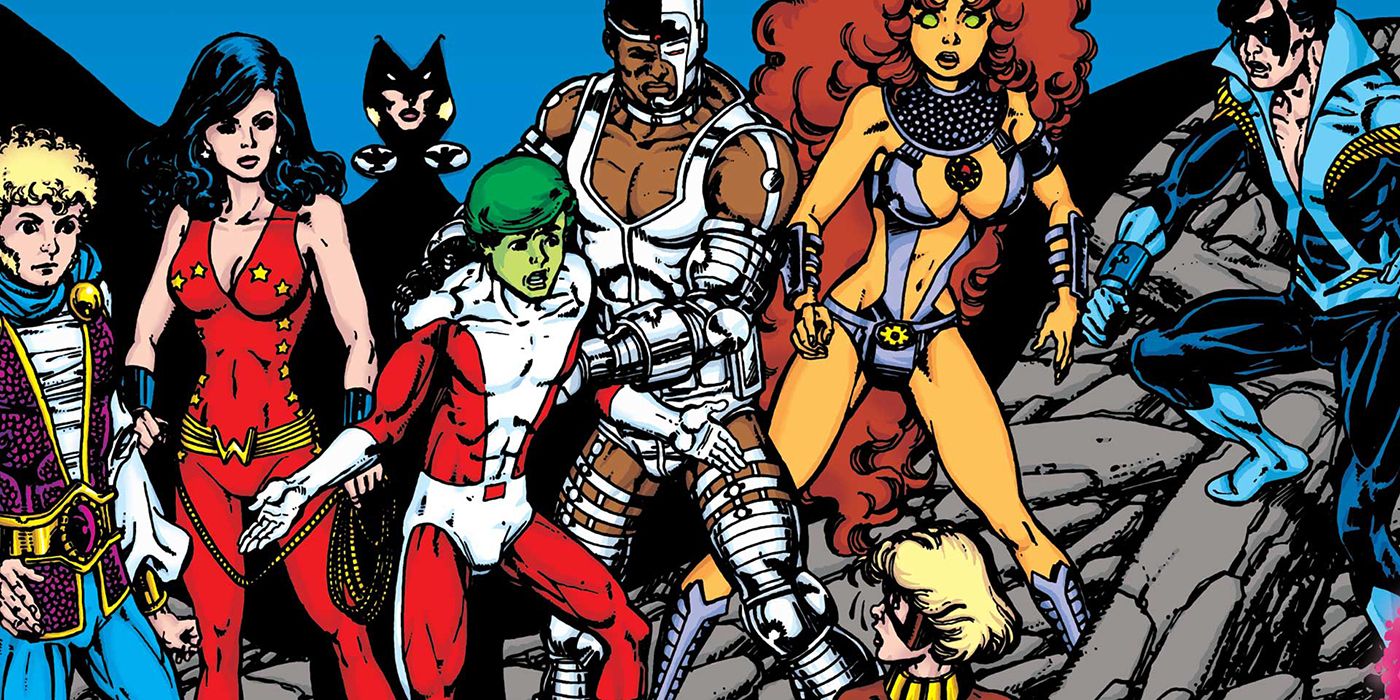Read update
- Fans continue to await Nightwing on the big screen, but with James Gunn taking over, it might be time for Dick Grayson to get the cinematic attention he deserves. These comic book narratives should surely be looked over, if the incoming creative team are looking influential stories to adapt, based on Batman's former protégé.
Dick Grayson is one of those characters that has managed to constantly evolve with the times; he can tread the darkness while remaining a light, accessible character. He was Spider-Man before there was one. He even has his own fan-run database, which thankfully—though surprisingly—isn’t called Dickipedia. Dick Grayson is one of the oldest characters in DC Comics history with almost eighty years’ worth of adventures spanning dozens of continuities. To break down the best Nightwing comics is a difficult task.
There’s a limit to the number of Chuck Dixon stories on this list, because he could have easily taken it over. The list keeps it to the comic books, which is why Batman: The Animated Series classics like Robin’s Reckoning and Old Wounds didn’t make the cut. While primarily known for his roles as Robin and Nightwing, it's important to respect every aspect of his history, including his time as a spy and as Batman.
UPDATE: 2022/12/13 11:10 EST BY GEORGE CHRYSOSTOMOU
Fans continue to await Nightwing on the big screen, but with James Gunn taking over, it might be time for Dick Grayson to get the cinematic attention he deserves. These comic book narratives should surely be looked over, if the incoming creative team are looking influential stories to adapt, based on Batman's former protégé.
Batman: Prodigal
When searching for the best Nightwing comics it's hard to ignore the work on Batman: Prodigal from Chuck Dixon. The narrative is a part of the larger Knightfall saga and sees Bruce Wayne struggling with his back injuries, incurred from the wrath of the antagonist Bane.
The narrative sees Dick Grayson don the cowl, stepping up as Batman in a way that perhaps only he could. He has massive shoes to fill, and the story spreads across multiple comic book runs, with DC's other heroes reacting to the new kid on the block as he continues to tackle the legacy of Wayne and how he has left Gotham.
Nightwing #140-146: Freefall
If Nightwing was to appear on the screen in the DCEU then Freefall might be a fantastic arc to look into further. Written by Don Kramer, Peter Tomasi, and Michael Bair with art from Rags Morales, the story calls on Dick to become the world's greatest detective in his own right.
The bodies of deceased villains have begun to vanish, leading Nightwing into a complex underworld of experimentation and the League of Assassins. Although Talia Al Ghul is a villain of note here, it's Dr. Creighton Kendall who adds something unique to the premise, with Nightwing looking to define himself outside of Batman's shadow in an iconic run in the character's history. Visually, the gothic tension permeates from the page.
Batman Chronicles: The Gauntlet
The Gauntlet is one of the few single issues to be specially published on its own, rather than as part of a collection. It details the night that Robin actually became Robin. Batman presents one final challenge to a young Dick Grayson: survive in Gotham on his own for one night. If Bruce can’t catch him in that time, he’s worthy of being The Dark Knight’s partner.
The Boy Wonder sets out, though he's not only on the run from his mentor, but the mafia has put a hit out on Robin. He must evade both parties and foil the mob. Realizing that there are other lives at stake, Dick leaves clues for Batman to find that will lead him to the bad guys. Naturally, things go a bit sideways, but it's nothing Robin can’t handle.
(Rebirth) Nightwing #15 & #16: Even in a Dream/Nightwing Must Die
These two stories are a microcosm of what makes Dick Grayson the beloved character that he is: he’s an every-man. Even in a Dream takes place over two months, showing his budding relationship with Shawn Tsang as the two fall in love, fight, makeup, and create a strange but stable life with each other. Writer Tim Seeley’s literate and careful structure build for the reader a sense of affection for the couple, and through Grayson’s voiceover and thematic usage of Euripides’ tale of Hercules, a sense of dread too. Seeley connects the concept of superheroes to Greek myths, and underlines the ingredients of tragedy that are in the DNA of both.
Dick handles falling in love like everything else—he just dives right in regardless of consequence—but when the realization hits him, it’s with a sense of both relief and terror, particularly the latter when finding out she might be pregnant or when he realizes she’s gone. The reactions are very human, and very accessible, which is incredibly rare for superhero comics.
Battle for the Cowl
Battle for the Cowl is a Hollywood blockbuster in comic form. Bruce Wayne is pretend dead (tax purposes), Gotham is burning, and Damian Wayne stole a Batmobile to pick up girls. Plus, Jason Todd has become a threat. He has declared himself the city’s savior and is shooting anything that moves. Tim Drake realizes that Gotham needs a bat and dons the cowl himself.
What follows is pure bubblegum fun with Batman vs. Batman, followed by Batman vs. Batman II. The GCPD is attacked, Killer Croc eats a tween because Oracle ejected her from the Batmobile, Mr. Zsasz continues to be a failure. Dogs and cats living together, mass hysteria! On a character level, Battle for the Cowl is about which one of Bruce's sons is worthy of taking up his mantle. While it’s obvious that Dick is the right choice, the moment needed to feel like a mythic revelation for Grayson. The miniseries is quick, and sets up the explosive, kinetic ride that the new Batman and Robin would become known for.
Nightwing #25: The Boys
Back in the '90s, Chuck Dixon essentially wrote every Batman book on the stands, including Nightwing and Robin. Here, Dick and Tim Drake hang out to do some blindfolded parkour crimefighting in Blüdhaven, Nightwing’s city that makes Gotham look like Paradise Island. If the action was removed from the script, and excise any reference to the superhero game, they'd be a complete and normal character story between brothers. Being the younger one, Tim feels like he must live up to the expectations Dick set, while Grayson himself is trying to become his own man and remain independent. Tim is trying to understand relationship dynamics within the family and with girls, Dick is imparting brotherly advice, and they’re both subtly worried about the future.
By far the best part of their conversation is Nightwing’s reaction to Tim mentioning his girlfriend was pregnant. It’s an absolutely perfect, realistic response, and a testament to what can be done when a writer is allowed to slow down the pace for a minute and let the characters do the work.
The White Knight
This is a forgotten gem in Peter J. Tomasi’s pre-New 52 Batman & Robin run, where Dick is still Batman, and Gotham had conformed to the new Dynamic Duo. The city they protect was definitely still Gotham, but it’s presented very differently. The gothic patterns remain, but there’s more light; fluorescent neon gives the series a kinetic feel, making this feel younger. Dick and Damian are Batman and Robin here, and they’re much younger than their previous counterparts. They investigate the murders of villains’ family members by a maniac looking for revenge; himself literally as luminescent as the city.
Of course, the underlying theme hits hard; nature vs. nurture. Are the families innocent, or is there really something there an evil gene? This leads to a divide between Dick and Damian, and it ends not with Robin going too far to catch the villain, but Batman. It’s heady stuff, and it’s technically a filler arc, but the pace is fast, the character work is tops, and Pat Gleason’s death tableaus are worthy of Hannibal.
Nightwing: Year One
Another Chuck Dixon story (this one co-written with Scott Beatty)! Many of Dick Grayson’s adventures have been metaphors for coming of age, and Nightwing: Year One is no exception. Here, dad’s kicked him out of the house, and he needs to find a way to survive. By the time Dick was in his late teens, he and Bruce were not getting along. Bruce fired him, and Nightwing was born.
The crux of the story is Dick figuring out if he wants to go into the Bat-family business, and through his many connections to the various sections of the DCU, realizes that in Barbara Gordon, Boston Brand, the Teen Titans, and the Justice League, he already has a family. He takes the name Nightwing out of respect for Superman. The point was to give Nightwing the hero’s journey he needed and further differentiate the former Boy Wonder from Batman. Yes, both of them are orphans because of criminals, but while Batman fights in the name of vengeance, Nightwing does it because it’s the right thing to do.
Batman: Nine Lives
Presented in old newspaper strip format, Nine Lives is a noir callback taking place in the 1940s, and is grittier than a dried-up oil derrick. This is Batman by way of Raymond Chandler and James Ellroy, the sort of tale that would have made Bill Finger proud.
While it is a Batman title, Dick Grayson is the focus of the story; here, a former soldier turned drunken private eye who is investigating the murder of Selina Kyle, a madam whose clients served the richest and most influential in Gotham. The miniseries reimagines everyone in the Batman oeuvre. It’s vicious and nasty, but the essential chords of the characters remain the same. It’s a character study—especially of Dick Grayson—showing us that there are certain traits hardwired into the character. Even when he’s a drunken, bankrupt mess in a rumpled, lived-in suit, Dick Grayson will always try to do the right thing. He’ll improvise rather than plan. He’ll put his life on the line.
Grayson #12: The Journey Home
The Journey Home is about the effect a single person can have on a life; both in the past and present. The issue depicts meetings with Damian (particularly heartwarming), Barbara, Tim, Jason, and an amnesic Bruce (ugh) after they found out Dick had faked his death a year ago. Each meeting is deeply emotional and decorated in dialogue balloons from past comics in the last eighty years of continuity that get to the crux of that character’s relationship with Dick Grayson. That in itself is an impressive achievement in the comic panels, and its use is an important one. It shows him as a central part of the family; the one everyone gets along with, the one everyone respects.
The issue solidifies and complicates these relationships, but also shows off an important character trait: leadership. Dick has always been a natural leader, and when he returned, despite the problems that may have existed, the Bat Family will rally around him.
Birds of Prey #8: On Wings
Chuck Dixon again focuses on characters—this time on the often maudlin Robin and Batgirl romance—or, as they are now, Nightwing and Oracle. A night at Haly’s Circus leads to them discussing their relationship and their shared history.
They’d both come back from trauma, but processed it in different ways. Dick is at peace with what happened to him, but Barbara still wants revenge. At this point, the Joker had crippled her only a few years prior, so she was still dealing with the freshness of it. They talk about regrets, about what she misses; namely, she missed swinging through the air. So, one last time, Grayson carries Barbara up to the trapeze and pushes her off (in a romantic way). They fly together and even manage a 'flying transfer.' For a moment, Barbara was on her own again, swinging through the air like she was still Batgirl. It was not entirely the closure she wanted, but it allowed her to be herself again, if only for a little while.
The Great Leap
In retrospect, The Great Leap—as well as Tomasi’s excellent preceding story Freefall—was a way to show both the audience and Dick Grayson the character that he was fit to take on the mantle of Batman. In it, Nightwing takes on Two-Face in a bloody and personal war that nearly destroys Manhattan, and Dick straddles the line between justice and vengeance more than ever before. It shows Nightwing that he can stand toe-to-toe with the worst of the worst and still some out victorious, even if he is suffering from two bullet wounds and is tripping on fear toxin.
On the other side of it, several members of the Justice League and the Justice Society drop by for cameos reaffirming Dick’s longstanding and deep connections within the rest of the DCU. He’s an integral piece of the DCU and its history. His time in the JLA (as Nightwing and Batman) is a testament to this, even if some of those stories didn’t quite match the quality of others here.
Batman vs. Robin
This is Grant Morrison’s original story arc from his Batman & Robin run that saw Dick Grayson as the Dark Knight and Damian as the Boy Wonder. Despite the title, the story is focused on the strong bond that developed between the two. When finding out that Bruce Wayne might still be alive, Damian’s first thought isn’t the joy at maybe getting to know his father, but the worry he and Dick won’t be partners anymore. When Talia offers him a chance to come home, Damian declines, preferring to stay with Grayson and Alfred.
Likewise, when Damian’s body was taken over by Talia and Deathstroke, Grayson was furious, and stormed al Ghul Island to confront them, beating up many people on the way. Morrison’s inversion of the Dynamic Duo—having an optimistic Batman and a cynical Robin—along with the youthful edge and futurist tone, gives the arc a rock and roll feel, and makes the case for a series that continues their adventures in some capacity.
Grayson #5: We All Die at Dawn
When their helicopter goes down, Dick, Helena, and Midnighter are stranded with a newborn in the Saudi desert, two hundred miles from civilization. The baby has a metahuman heart, and Spyral wants the kid so they could experiment on it. So they walk. Helena was badly injured in the crash. She falls first. Midnighter has enhancements making him superhuman. All he must do is outlast Grayson, and he can have the child—and use its heart so he can live. Grayson won’t have that. So they walk. Even Midnighter eventually falls. When he asks how that’s possible, Dick gestures to the kid: “Because this is my series, you idiot.” “Because I have her.”
Dick Grayson’s will, heart, and determination are practically a superpower in themselves. In his half-lucid recollections to the newborn, telling her of the adventures he had as Robin—particularly from the story Robin Dies at Dawn—shows not only how he became so determined, but why. Batman made him strong; experience showed him that survival is always possible. Dick manages to get the kid to safety, and tells his bosses at Spyral that the newborn died. In reality, he gave the girl to loving parents.
Nightwing 152-153: Eminence Front & Black Dawn
This Pete Tomasi story is one of Nightwing's best comics and sees the end of the post-Crisis Nightwing title. Eminence Front finds Bruce Wayne dead (again, tax purposes), and Ra’s al Ghul comes calling. Ra’s felt that the Dark Knight was the last person in the world worth killing, and well, Bruce was practically Dick’s father.
Ra’s also threatens that he can now take over Gotham. Dick respectfully disagrees with a good old-fashioned punch to the heart. They sword-fight in the desert—a reference to Birth of the Demon story—and Nightwing wins fairly. It’s then that they both realize that Grayson must become Batman, and Ra’s calls him 'Detective,' as he once did Bruce. The final issue has Dick moving home to Gotham, along with some slick references to Batman: Year One. So much of Tomasi’s run in the latter days of this title was to make Nightwing realize he’s ready to lead the family. The series ends with a promise kept—the student has become the teacher. The Boy Wonder has grown up.
Robin: Year One
The last Chuck Dixon story on this list takes place at the beginning of Robin’s career, once again co-written with Scott Beatty. This retelling is like the character of Dick Grayson himself: bordered by both light optimism and dark cynicism. The bond between Bruce, Alfred, and Dick is a major source of warmth in the story, but it is balanced by the vile: Mad Hatter is selling little girls into sex slavery, Robin and Two-Face nearly murder each other in particularly violent encounters, and Dick briefly joins the League of Assassins.
Origin stories—especially retellings—are usually a bore, but Robin: Year One works so well because it brings in enough fresh ideas and defies narrative expectations to deliver something that works as noir and as an accessible story about a kid growing up. Even in its lightest moments, though, tragedy is still the undercurrent of the text. Young Dick Grayson ends his first relationship because, as always, the mission must come first. Dixon lets the reader make the judgment of whether the morality behind Batman’s plan is fair, and if Grayson had any real choice in the matter at all.
Batman: The Black Mirror
Scott Snyder’s The Black Mirror asks the question: Can Dick Grayson be a good Batman? The answer: no, he could be the best. Broken up into three arcs, The Black Mirror runs with the theme of corruption; Gotham City corrupts everything it meets. Bruce reveled in the depravity—fighting darkness with darkness. Dick is different. His personal arc is more of a question: can he still be the optimistic person he is while being Batman? Can he change Gotham without it changing him?
Snyder has Batman tested physically, mentally, and emotionally, using different villains as metaphors for each challenge. Best of all are the callbacks to his past--the connection to the Gordons and Tony Zucco. He must confront himself; not everything was as good as he remembers, but not as bad either. Of course, this is an accelerated course for being Batman; it compresses years of experiences, victories, and losses for The Dick Knight into the trial of Dick Grayson’s life. The Black Mirror is a modern classic Batman story that doesn’t even need Bruce Wayne as Batman. It proves that while Dick may never take over the role of Batman the way Wally West did for the Flash, he’s just as qualified.
Teen Titans: The Judas Contract
Dick Grayson is one of the few comic characters to actually grow up. From debuting in 1939 as a ten-year-old, he’s now in his mid to late twenties. He left the role of Robin behind, and became his own hero, Nightwing. Grayson hands the Robin mantle over to Jason and becomes The Hypno Hustler Nightwing, taking the name from Kryptonian myth, and embracing his deep history with the character in DC Comics. The Judas Contract shows how much Grayson has grown into himself. No longer a sidekick, he’s the leader of a team featuring some of the most powerful heroes on the planet.
It also presents Deathstroke. His dark history and scummy actions made him the best Dick Grayson villain of them all, and paved the way for the darker stories DC had been struggling to return to since the late '70s. By making Slade Wilson a Batman-level strategist and fighter, The Judas Contract is also a subtle coming-of-age story that has Grayson not only having to be the leader that Batman isn’t, but defeating someone that happens to be the equal of his legendary mentor. The son eventually must outgrow the father in one of the best Nightwing comics.

